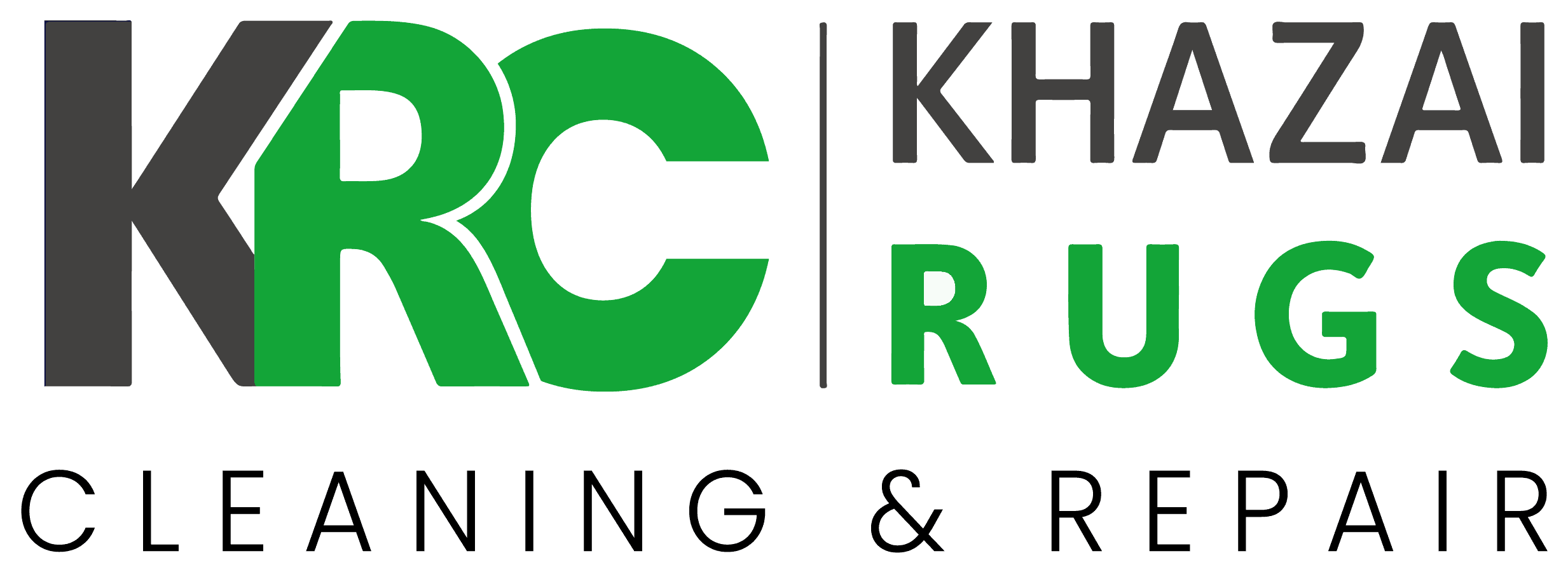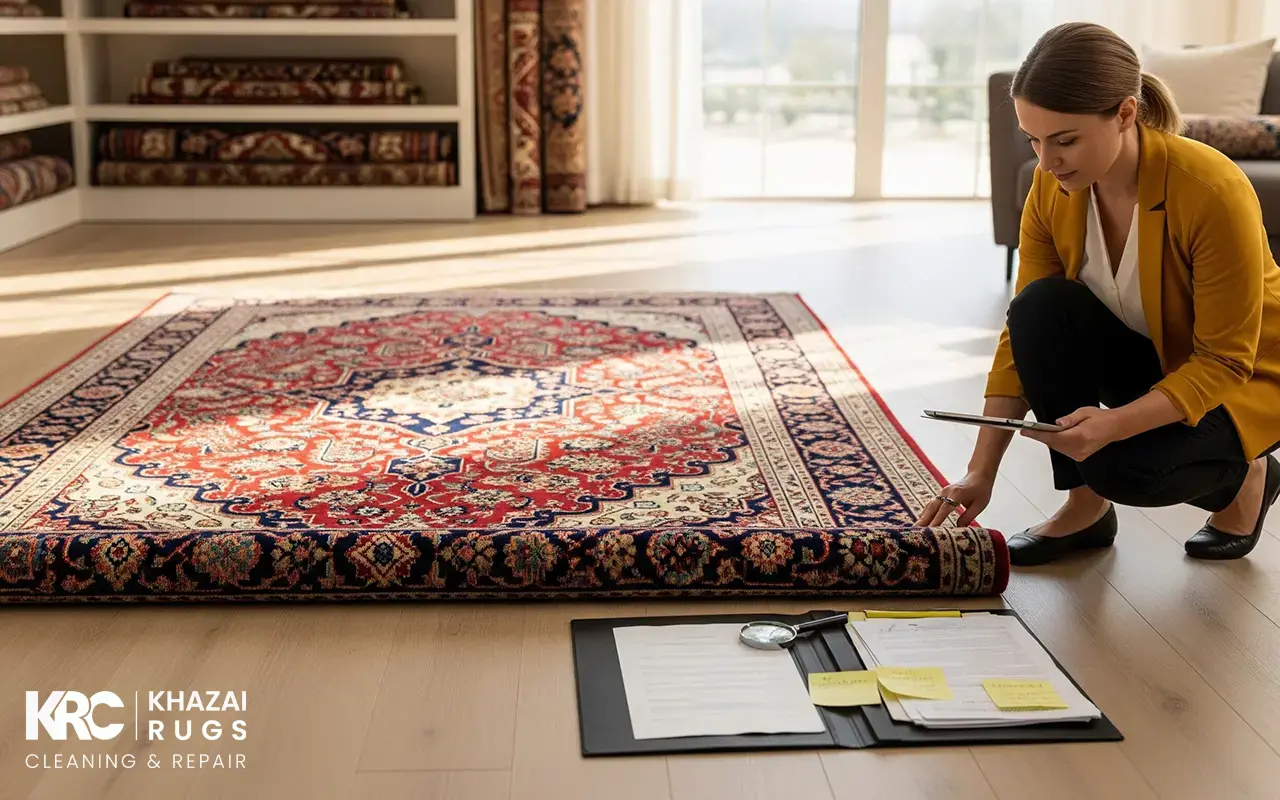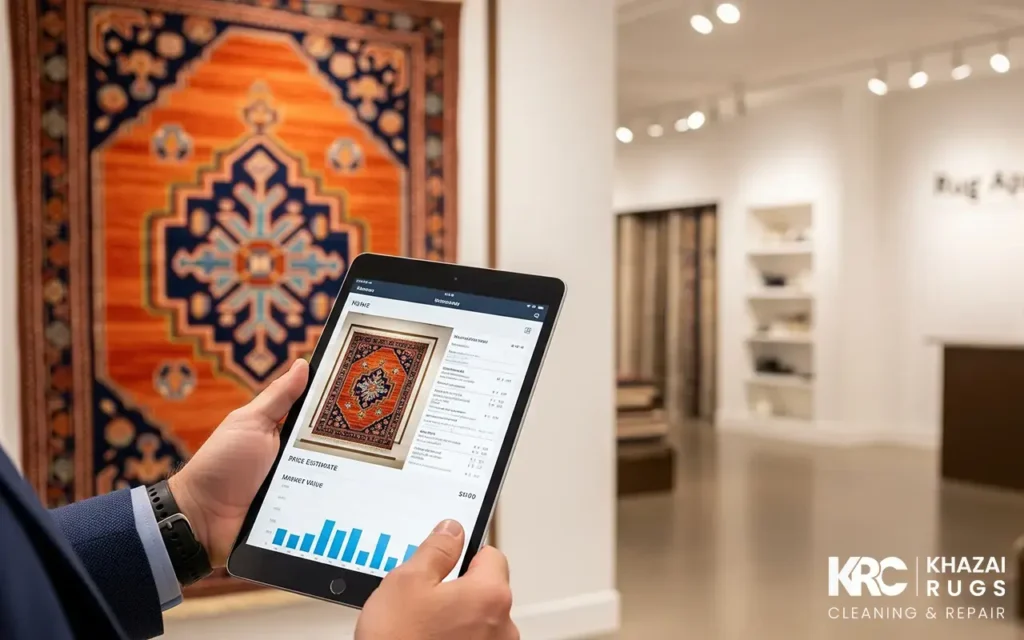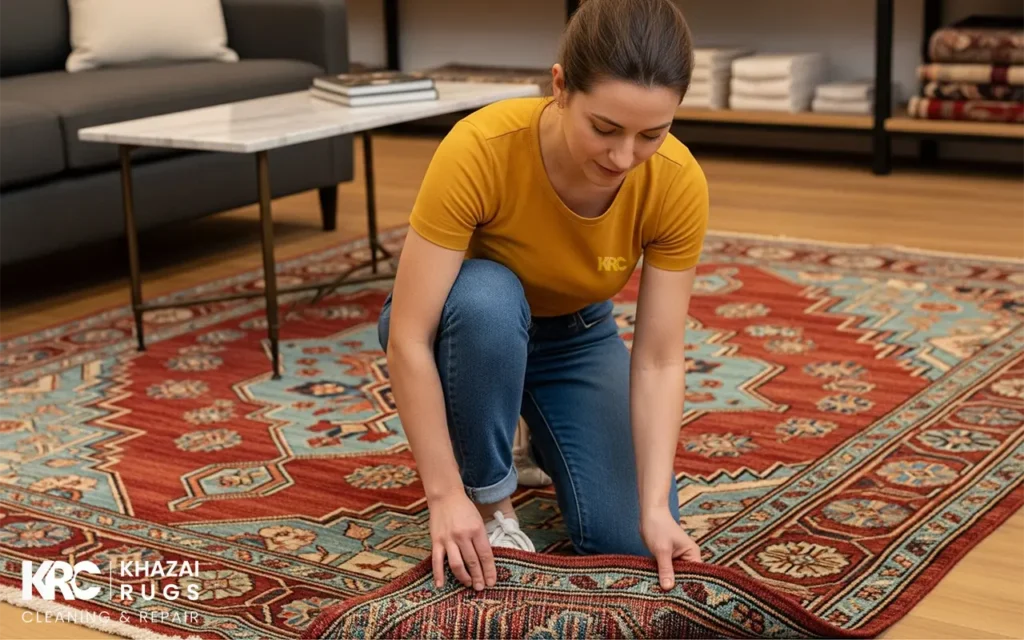A rug can carry stories, family milestones, and real market value. Picking a qualified rug appraiser protects both the memories and the money. In this guide, we speak plainly about what to look for, how to verify credentials, and the signs of reliable appraisers that make the whole process smoother. We’ll also cover transparent reports, common red flags, and avoiding appraisal scams without drama. When you want a grounded rug appraisal, our team at Khazai Rug Cleaning makes the path clear, with options like our Rug Appraisal Service whenever you need a documented value.
What Defines a Qualified Rug Appraiser?
Before diving into details, here’s the heart of it. A qualified rug appraiser blends education, real-world practice, and professional standards. Think of it like a three-legged stool: training, hands-on skill, and accountability. These form steady signs of reliable appraisers you can trust.
Professional Education and Certification
Training comes first. A qualified rug appraiser studies fiber identification, knot structures, dyes, regional weaving traditions, condition grading, and valuation methods. Solid programs cover research, comparable sales, and report writing. Clear course records and certificates point to the groundwork behind precise rug appraisal work. Education is the map; practice is how the appraiser reads the terrain with care.
Hands-On Experience With Rug Types
Practice turns theory into decisions. A seasoned, qualified rug appraiser has handled vintage Persians, tribal pieces, city workshop rugs, and modern designs. They learn how age, wear, repairs, and provenance affect value. Touch, sight, and structure come together. Years of small calls sharpen judgment, so a written rug appraisal feels steady rather than guessy.
Membership in Industry Associations
Professional groups add another layer of accountability. Membership signals regular training and clear standards for ethics and reporting. A qualified rug appraiser who participates in associations shows commitment to best practices. This is one of the clearest signs of reliable appraisers because it invites review, feedback, and steady improvement over time.
How to Verify an Appraiser’s Credentials
The next step is simple: confirm what’s claimed. Verification guards your budget and your rug. These moves help you spot the signs of reliable appraisers while avoiding appraisal scams and keeping the process calm and organized.
Request Certification or License Documents
Ask for proof, then read it. A qualified rug appraiser shares certificate scans or license details without pushback. Dates, program names, and topics should make sense. When proof arrives quickly and matches what was stated earlier, it supports the credibility of the rug appraisal that follows.
Check for Third-Party Accreditation
Independent accreditation adds weight. It shows a neutral party has reviewed standards, methods, and ethics. If a qualified rug appraiser points to external audits or peer review, that’s reassuring. Third-party oversight joins your own review to create strong signs of reliable appraisers you can lean on.
Why Transparency Matters in Rug Appraisals
Clarity keeps everyone on the same page. A transparent process cuts confusion, helps with avoiding appraisal scams, and sets clear expectations for timing, methods, and fees. This is where a careful rug appraisal process turns trust into something you can hold in your hands.
Detailed Reports and Methodologies
A thorough report is the backbone. Expect a description of materials, weave, condition, age indicators, comparable sales, and the reasoning behind numbers. Photos help. When a report explains the method and the steps taken, it becomes one of the strongest signs of reliable appraisers and a steady base for insurance or resale.
Willingness to Explain Value Conclusions
Good pros talk through their thinking in plain language. A qualified rug appraiser can outline fiber tests, knot counts, construction clues, and comps. Clear talk helps you understand the rug appraisal number, and it also makes future decisions easier. No smoke, no mirrors, just the logic and the data that guided the final figure.
Avoiding Hidden Fees or Conflicts of Interest
Pricing should be simple and upfront. So should potential conflicts, like also buying rugs from clients. Clear policies reduce risk and support avoiding appraisal scams. When costs, timelines, and roles are stated openly, you get strong signs of reliable appraisers and a process that respects your time and budget.
What Red Flags Indicate a Dishonest Appraiser?
Spotting trouble early saves stress. A few habits stand out: big promises without evidence, vague paperwork, and pressure to move fast. Keeping a short list handy helps with avoiding appraisal scams and strengthens your sense for the signs of reliable appraisers by contrast.
Overpromising on Rug Value
Wild claims raise eyebrows. If estimates sound too high without comps, or the story keeps shifting, pause. A qualified rug appraiser explains limits and ranges rather than pitching fantasy numbers. Real demand, condition notes, and market data keep a rug appraisal grounded and useful.
Lack of Written Documentation
If nothing arrives in writing, trust wilts. A missing report, no itemized invoice, or vague descriptions create risk. Strong providers document scope, fees, steps taken, and outcomes. The right paper trail helps with avoiding appraisal scams and backs up the rug appraisal if you need to show proof later.
How to Research a Rug Appraiser Before Hiring
Simple research builds confidence. Collect a few data points and see if they align. Reviews, business records, and references often reveal the signs of reliable appraisers before a single stitch is inspected.
Online Reviews and Testimonials
Patterns matter. Look for consistent notes about clarity, timeliness, and accuracy. The best comments read like everyday stories. When people mention a qualified rug appraiser explaining a step clearly or delivering a strong rug appraisal, that shared experience tells you a lot.
Verifying Business Licenses and History
Public records can be helpful. Confirm business status and the years in operation. Steady history and transparent contact details support the signs of reliable appraisers you’re after. A clean timeline gives context to the rug appraisal you’ll receive and supports your decision to move forward.
Asking for Past Client References
References allow quiet but helpful insight. Short, real examples from prior clients show how the process unfolded. Solid names and reachable contacts add to the signs of reliable appraisers, and they round out your picture before booking the rug appraisal appointment.
When Should You Seek a Second Opinion?
There’s wisdom in another set of eyes. If numbers feel off or the story doesn’t land, another professional can steady the picture. Taking this step supports avoiding appraisal scams and builds a sturdier base for decisions.
Conflicting Appraisals From Multiple Experts
Different pros can weigh condition and comps differently. When reports diverge, ask each provider to clarify their reasoning and sources. Alignment often appears once data and context are compared side by side. That clarity helps you choose the rug appraisal that reads the market best.
Suspiciously High or Low Valuation
If a number sits far from reality, slow down. A second voice can validate concerns and protect your plans. This step supports avoiding appraisal scams and lowers risk before you insure, sell, donate, or pass a rug to family with a firm paper trail behind it.
How to Prepare for a Professional Rug Appraisal
Preparation saves time and sharpens accuracy. A little homework gives a qualified rug appraiser what they need to work efficiently. A short checklist helps the session move smoothly and supports clear, consistent results.
Gather Purchase and Repair Records
Collect bills of sale, auction printouts, invoices for repairs, and any notes about prior owners. Paper trails help dates, materials, and condition align. Solid records strengthen the rug appraisal and make the conclusions easier to use later for coverage or resale.
Clean the Rug and Take Clear Photos
A fresh surface helps the eye. Light cleaning and bright, even photos reveal weave quality, color variation, and wear. If spots linger, consider our Rug Cleaning Service or, for accidents and pet marks, our Rug Pet Stain Removal Service. Better inputs lead to a cleaner rug appraisal outcome.
Provide Any Provenance or History
Stories matter to value. Workshop, region, family notes, and exhibition mentions add context. Even a short paragraph can guide the research. A qualified rug appraiser uses these details to shape the rug appraisal and to select the most relevant comparable sales.
Why a Qualified Rug Appraiser Protects Your Investment
Good process shields value. Education, experience, and transparency lay down the rails for consistent results. A qualified rug appraiser supports smoother claims, smoother sales, and calmer decisions at key moments.
Accurate Insurance and Resale Value
Clear numbers help carriers and buyers move faster. When the steps, comps, and condition notes are solid, the rug appraisal stands up under review. If needed, our Rug Appraisal Service provides thorough documentation that fits everyday needs and higher-stakes situations alike.
Confidence in Legal or Estate Situations
Courts, accountants, and estate planners like clarity. A well-supported report travels well across desks. Strong records help with gifting, tax matters, and family transfers. Protect condition and value between milestones with the right support:
- Rug Storage Service: Safeguards pieces during moves, renovations, or probate. Climate control and proper wrapping prevent fading, creasing, and moth damage, so the appraised value holds steady.
- Rug Padding Service: Adds a stable base that reduces slip and wear. A good pad cushions foot traffic and protects the foundation, helping preserve condition ratings used in valuation.
- Rug Repair Service: Professional repairs address edge wear, holes, or weakened areas. Timely fixes stabilize condition and can prevent bigger losses that would lower an appraisal later.
Conclusion
The right path is steady and calm. Look for education, practice, and accountability, then verify what is claimed. Favor transparency, written reports, and clear pricing. Keep a short mental list of red flags and focus on the signs of reliable appraisers that make life easier. With a qualified rug appraiser, you avoid noise, keep decisions grounded, and keep heritage pieces thriving. When you want clear documentation, our Rug Appraisal Service is built to help, step by step.





